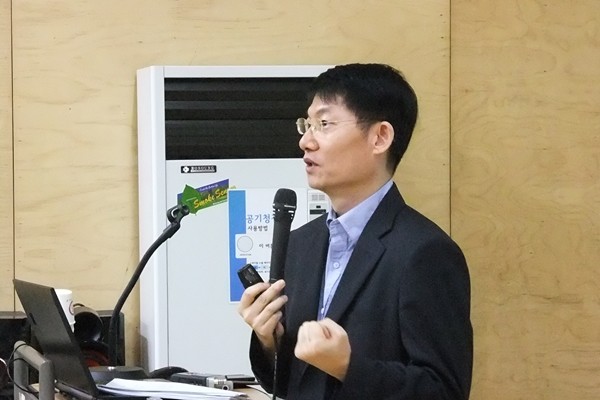움베르토 에코의 인터넷 글 잘쓰는 법
인터넷에서 나는 글을 잘 쓰는 방법에 대한 일련의 지침들을 발견했다. 그리고 그것을 약간 수정하여 내 것으로 삼았다. 많은 사람들, 특히 글쓰기 학교에 다니는 사람들에게 유용할 것이라고 생각했기 때문이다.
1. 두운(頭韻)을 피하라. 비록 올빼미들을 유혹할지라도.(이탈리아 어로 allitterazione(두운), allettare(유혹하다), 그리고 allocco(올빼미)는 두운이 일치한다.
2. 접속사를 피해야 하는 것은 아니지만, 그러나, 오히려 필요할 때는 쓰도록 한다.
3. 기성품 문장들을 피하라. 그건 <다시 데운 수프>와 같다.
4. 자신의 생각을 표현하라. 자신을 살찌우게 하니까.
5. 상업적 기호 & 약자 etc.를 사용하지 마라.
6. 괄호는 (꼭 필요해 보일 때도) 담론의 흐름을 방해한다는 것을 (언제나) 기억하라.
7. 말없음표들의…… 소화 불량에 걸리지 않도록 주의하라.
8. 가능한 한 따옴표를 적게 사용하라. 그것은 “목표”가 아니다.
9. 절대로 일반화하지 마라.
10. 외국어는 절대 엘리건트한 스타일을 만들지 않는다.
11. 인용을 줄여라. 에머슨이 올바르게 지적하였듯이 <나는 인용을 증오한다. 단지 네가 아는 것만 말해라>
12. 비유는 기성품 문장과 같다.
13. 과잉 설명을 하지 마라. 똑같은 말을 두 번 반복하지 마라. 반복한다는 것은 불필요하다(과잉이라는 말은 독자가 이미 이해한 내용을 불필요하게 다시 설명하는 것을 의미한다.)
14. 단지 똥 같은 놈들이나 저속한 말을 사용한다.
15. 언제나 대충 구체적이도록 하라.
16. 단 하나의 단어로 문장을 만들지 마라. 없애라.
17. 지나치게 과감한 은유들을 조심하라. 그것은 뱀의 비늘 위에 돋은 깃털과 같다.
18. 쉼표는, 정확한 곳에, 넣도록 하라.
19. 콜론과 세미콜론을 구별하라 : 비록 쉽지 않을지라도.
20. 만약 적절한 이탈리아 어 표현을 찾지 못하더라도 절대로 사투리 표현에 의존하지 마라. <페소 엘 타콘 델 부소(베네치아의 사투리 속담으로, 병보다 오히려 치료가 더 나쁜 경우를 가리킨다)>
21. 어울리지 않는 은유를 사용하지 마라. 비록 <노래하는> 것처럼 보일지라도. 그것은 마치 탈선한 백조 같다.
22. 정말로 수사학적 질문이 필요한가?
23. 간략하게 하라. 긴문장을 피하고, 가능한 한 적은 숫자의 단어 안에다 자신의 생각을 압축하도록 노력하고 - 또는 삽입구를 넣지 마라. 그것은 불가피하게 산만한 독자를 혼란스럽게 만드니까 - 그리하여 담론이 분명히 매스 미디어의 권력에 지배되는 우리 시대의 비극들 중 하나를 이루는(특히 불필요하거나 필수 불가격하지 않은 자세한 정보들로 쓸모없게 채워졌을 경우) 정보의 오염에 기여하지 않도록 하라.
24. 과장하지 마라! 감탄 부호를 적게 써라!
25. 야만적 표현을 좋아하는 최악의 <팬들>이라도 외국어를 복수로 만들지 않는다.
26. 외국어 이름을 정확하게 써라. 가령 보둘레르, 루즈웰트, 니채 등처럼.
27. 언급하는 저자나 등장인물들을 완곡하게 표현하지 말고 직접 지명하도록 하라. 19세기 롬바르디아 출신의 최고 작가지아, <5월 5일>의 작가도 그렇게 했다.
28. 글의 첫머리에서 독자의 환심을 사기 위해 <감사의 표시>를 하도록 하라(그런데 혹시 여러분이 너무나도 멍청해서 내가 지금 말하고 있는 것을 이해하지 못할 수도 있다)
29. 철자를 자새하게 학인하라.
30. 반어법은 얼마나 지겨운 것인지 말할 필요도 없다.
31. 너무 자주 문단을 바꾸지 마라.
최소한 불필요 할 때는.
32. <위엄 있는> 1인칭 복수를 절대 쓰지 마라. 우리는 그것이 나쁜 인상을 준다고 확신한다.
33. 원인과 결과를 혼동하지 마라. 오류를 범하게 될 것이며, 따라서 실수할 것이다.
34. 논리적으로 결론이 전제에서 도출되지 않는 글을 쓰지마라. 만약 모든 사람이 그렇게 한다면, 전제가 결론에도 도출될 것이다.
35. 옛날 표현이나 <아팍스 레고메나(유일하게 단 한 번의 기록만 남아 있는 어구)>처럼 이례적인 어휘들. 리좀같은 <심층 구조>를 너무 많이 사용하지 마라. 그것들은 아무리 그라마톨로지적 <차연>의 현현(顯現)이나 해체론적 표류에의 권유처럼 보일지라도 - 만약 그것이 극도로 세심한 문헌 비평 의식과 함게 읽는 사람의 세밀한 검토에 의해 논박의 여지가 있는 것으로 드러날 경우 더 나쁠 것이다- 어쨌든 수신자의 인지 역량을 넘어서기 때문이다.
36. 미완성 문장은 피하라.
블로그의 특성상 블로그에 적용할 수 있는내용이 있고 ,
적용할 수 없는 내용도 있으므로,
그냥 참고하여 수용할 수 있는 부분만 이용하면 될것 같습니다.
'출판하기' 카테고리의 다른 글
| 유홍준 교수문화유산을 보는 눈과 나의 글쓰기’ 강연에서 발표한 내용 (0) | 2014.05.22 |
|---|---|
| 광고의 아버지 로 불리는 데이비드 오길비(David Ogilvy 글쓰기 (0) | 2014.05.22 |
| 유시민ㅇ 글쓰기 강좌 (0) | 2014.05.22 |
| 생각의 발견 Sparks of genius – The 13 thinking tools of the world’s most creative people. (0) | 2014.05.22 |
| 글쓰기 조언들 (0) | 2014.05.22 |







